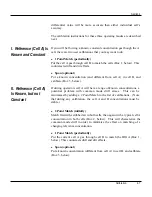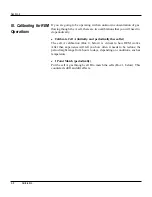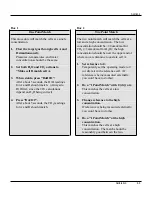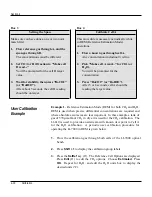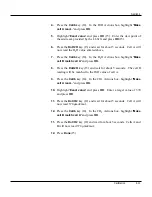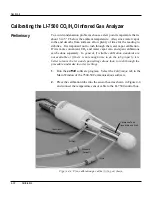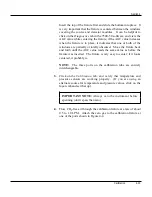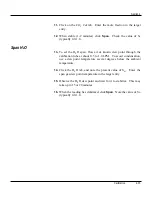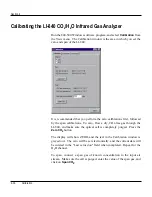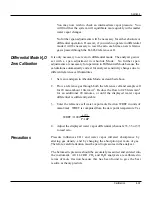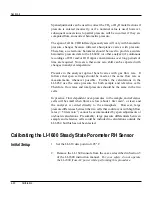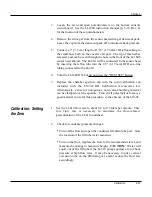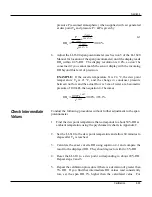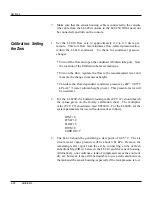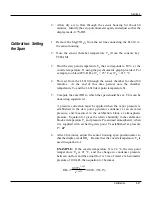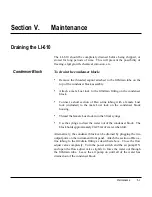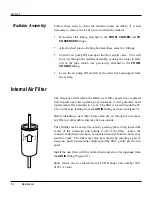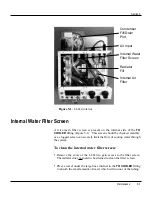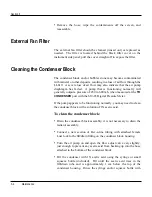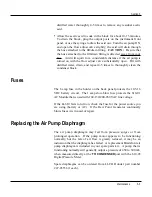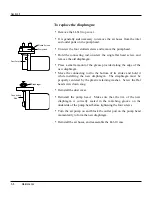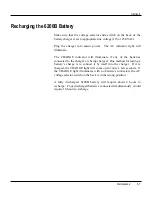
Section 4
Calibration
4-21
3.
Locate the zero and span potentiometers on the bottom console
circuit board. See the LI-1600 instruction manual (p. 5-10, Rev. 6)
for the location of these potentiometers.
4.
Remove the silica gel from the sensor head silica gel desiccant pack.
Leave the cap from the desiccant pack off to minimize back pressure.
5.
Connect a 3" (7.5 cm) length of 1/16" (1.59 mm) ID teflon tubing to
the small hose barb on the cuvette exit port. The tip of this barb is
recessed, and can be seen through the hole in the front of the LI-1600
sensor head shroud. The LI-610 will be connected to the sensor head
by inserting the teflon tube into the 1/8" (3.17 mm) ID Bev-a-line
tubing connected to the LI-610.
6.
Turn the LI-1600 ON, but do not press the "HUM SET" button.
7.
Replace the chamber aperture cap with the solid calibration cap
included with the 610-02 RH Calibration Accessories kit.
Alternatively, a sheet of non-porous, non-water-absorbing material
can be clamped over the aperture. Closed cell polyethylene foam is a
good material to use for this procedure, in the absence of the 610-02.
Calibration: Setting
the Zero
1.
Set the LI-610 flow rate to about 0.2 to 0.3 liters per minute. This
low flow rate is necessary to minimize the flow-related
pressurization of the LI-610 condenser.
2.
Check for condenser pressure changes:
•
Turn off the flow and open the condenser fill/drain tube port. Note
the location of the fill tube water meniscus.
•
Turn on the flow, regulate the flow to the recommended level, and
measure the change in meniscus height. CAUTION: Water will
squirt out of the fill tube if the LI-610 pumps against a lot of back
pressure at high flow rates. It may be necessary to put a vertical
extension tube on the fill/drain port, and/or reduce the flow rate
accordingly.

